Old Jack’s Collection (1)
Old Jack is a friend. In 2017 he made an appearance in the documentary “Forgotten Prairie” (Rueben Tschetter/Cache Productions – links below), where he took Team BIGDoer and some pals on a tour of his local area. Included, was a (now) ghost town just up the road from where he resides and has resided most of his life with which he has an intimate connection. It’s where he ventured to buy groceries, gas, went to the movies or a dance, and as a farmer where he travelled to sell his grain. Today he owns the 1910s era elevator there, which he used to deliver to back in the day.
Summer of 2018, our group reunites and has come to view Old Jack’s extensive collection of vintage iron scattered about his huge property. There’s old cars, trucks, tractors…you name it…dating from the 1920s to today. We didn’t get a chance to take them in much last visit, but here we’ve got the time. And Jack’s a most accommodating host and eager to show us around.
There’s just so much to see here, this will be a two-parter.
More with Old Jack…
Forgotten Prairie: Fusilier – (the town is private property).
Forgotten Prairie – the film!
Old Jack is a true Saskatchewan Pioneer and for almost his entire eighty plus years on this planet he has lived within sight of where he was born. In spite of his advanced age, he’s still out there mending fences and attending to his cattle. There is no retirement when you work the land, don’t you know. He seems happy to be busy, even if he’s a little slow in getting around. And he loves to collect old metal, which makes him to us a hero. Now let’s look at his collection…
1) Mercury trucks were Canada only and made by the Ford Motor Company in the 1940s-1960s period. This here example is from 1946 or 1947 and outside the badging was no different than Fords of the era.
2) The entire “Forgotten Prairie” team, Chris, Connie, Rueben Tschetter, Byron Robb and Rob Pohl pay Jack a revisit. Here’s he’s seen taking off across a field, taking some of our group on a tour of his property. Just a click or so away is the location of the house where he was born (long demolished). He speaks of it fondly. The land here is more rolling than some parts of Saskatchewan, but it’s still vast and expansive.
3) Jack’s place sit atop a hill with good views all around. It’s “Mount Jack”, perhaps the highest elevations in all Saskatchewan! Well, unless you count grain elevators. Or some guy on a tall ladder. Up near the “summit” this International KB series from the latter half of 1940s. With a little work, it almost looks like it could be driven away.
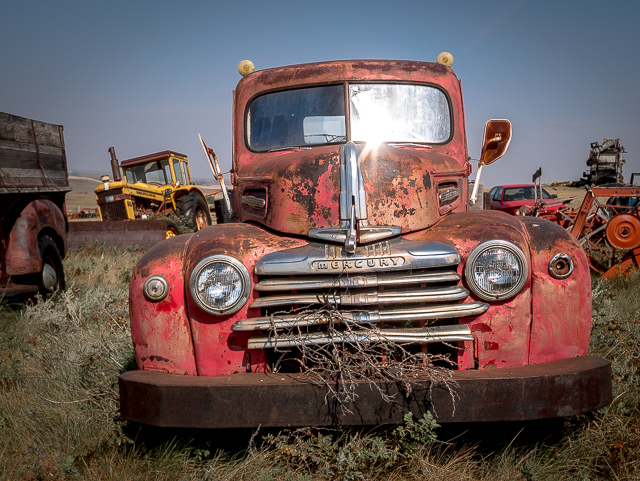
1) A Canada only Mercury.
4) International made pickup trucks up until the mid-1970s. They seem a very common make on the prairies back when and could be bought at your local farm equipment dealer. We’re heard many speak of them as the most rugged of all of the era. Today International (Navistar) only makes highway and vocational trucks (so big rigs).
5) This is a 1946 or 1947 Dodge Grain Hauler. There was a huge pent-up demand for vehicles after the hostilities of WW2 and many old trucks seen in our explorations out here on the prairies date from this period. The general design seen dates back to the 1930s and was superseded by a new Post-War model in 1948. Dodge is not seen as often as other makes.
6) In the 1940s, “luxuries” like turn signals, believe it or not, were an option. Who needs them in Saskatchewan? We don’t think these are factory and were likely added sometime later. Looks like you can even buy new-old-stock examples on Ebay today. That blue/green paint! Imagine it all shiny and new in that colour.
7) Inside, the simplest of designs and little in the way of comforts. Just a couple gauges, a rough old bench seat and that’s pretty much it.
8) This old truck once belonged to the Royal Canadian Air Force (RCAF). Jack couldn’t remember from where it came, but if you recognize the code, assuming it means anything, do speak up.
9) Tractors today are quite a bit removed from those of old. This – no cover or protection, a sprung metal seat (and for sure a sore bum), some instrumentation, a couple levers and you’re set. Now let’s farm!
10) This is a Minneapolis-Moline G706 from the first half of 1960s. It’s a fairly early four wheel drive tractor and was made in relatively small numbers. This brand did not have a large presence in Canada. It’s outfitted with a blade, for snow removal maybe?
11) Here’s another KB International. The mottled paint adds so much character.
12) A much smaller Minneapolis-Moline. Each maker of farm equipment had “company colours” and for them it was this bright yellow. It’s also “BIGDoer” colours, but that’s another story. This appears to be an early 1950s example.
13) This 1940s era truck was last plated in 1965. That’s just shy of twenty years on the road which is not bad given how hard a farm truck could be worked. That year Saskatchewan celebrated its “Diamond Jubilee” (50th anniversary). Provincehood only goes back to 1905. Canada as a country is a relative youngster.
14) Same truck. God bless ’em, those cheap-ass farmers. If something breaks, fix it it with what ever is lying around. Here, some metal bits and a old belt help tie down a truck hood.
15) The KB was International’s first Post-War design and were built in the years 1947-1949 in good numbers. Out in Saskatchewan they seemed particularly popular. It succeeded the earlier and similar looking K model. The KB series series went from 1-14 (with some skipped), the higher the number the heavier the rated hauling capacity. This “Binder” (nick-name for Internationals) is a KB5.
16) This truck has “Dayton”, or Spider, style wheels, the rims open in the centre and held in place by those large cast metal spokes, which were part of the vehicle. These were common on larger trucks, more so in the past, but even today some are so equipped. They’re said to be a more rugged design than the traditional pressed steel rims, of the era, but today it seems that advantage is nil.
17) This baby-blue Ford was a grain hauler. It must have been quite stunning in that colour when new.
18) Pontiac was big into stacked headlights in the mid-1960s, more so than any other make. They owned it, with most of their models of the era so done up. It does evoke a general “I mean business” type vibe.
19) A StratoChief (or Strato Chief) was a Canadian only Pontiac. This is a ’65 (we believe). These were not made in huge numbers.
20) A big old boat, this 1974 Oldsmobile 98. It’s a long distance call from the back seat to the front. Every time you fill it up, there’s a gas shortage. It seats about twenty! Or something close. We mean it’s about as big as a car get. And comfy riding and well appointed. Oldsmobile today is but a memory.
21) Rueben and Rob chat with Jack. Rueben, recall, makes documentaries and Rob shoots old school large format film. No doubt you seen both these fellows here before if you frequent BIGDoer.com. We all hang out from time to time.
22) In the old days there were a number of makes and models unique to Canada. An example of that, here’s a Mercury Truck (same one seen earlier). Given the small market in this here country, relatively speaking, makes these a tad uncommon. To the left, a vintage GMC.
23) Mercury trucks are highly collectible.
24) Made by GM Oshawa Ontario, a factory still in business today but soon to be closed after a century of making cars and trucks across many makes and models. This is a model “43-69D”, so in GM-speak a Buick Eight.
25) And here she is – that grill! Chrome-city! This is a 1951 model and was equipped with Buick’s legendary straight-8 engine. Byron photobomb!
26) And over in the grass, this hood belonging to the car above.
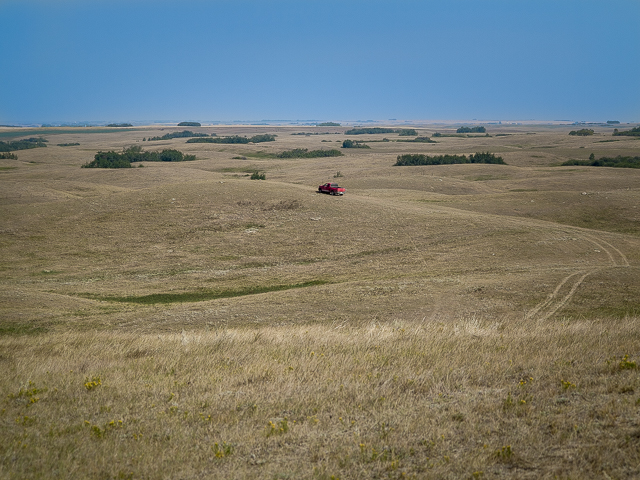
2) Off to explore.
27) Old Jack has many stories to tell and we listen mesmerized while shooting. He speaks of his collection, even if he’s not always sure how he acquired so much of it, but more so, it’s about his childhood there over the rise, the time spent in town, and his many years farming and ranching. We could listen all day. What a gracious host. Earlier, he was shown Forgotten Prairie, which he appears (first time he’s seen it). Then it’s a chat over coffee. I suspect he kinda questions our obsession with photographing old metal. You drove all the way from (Calgary, Calgary, Red Deer & Edmonton) for this? But hey!
28) These portholes were a Buick thing. In the 1950s, the premium models had four per side, the lesser-optioned models, three.
29) We’re crazy about tail fins, the more garish and over the top, the better. This one belongs to a Dodge Regent. And in the still shiny chrome, your author in reflection. A selfie of sorts I guess.
30) Front side view – this is a 1959 Regent, the last year the model was offered. In spite of being a budget oriented car, it’s hardly plain looking and the front end treatment suggest something more up-scale. Keeping a theme here, the Regent was Canada only, and just by that alone, the small market and all, makes these instantly uncommon today. I wonder how many survived being the scrapped?
31) If you had a break down or required a boost, or needed maps, driving or travel advice, you called the Saskatchewan Motor Club. Every province had an arm of the Canadian Automobile Association, which was part of the larger American Automobile Association.
32) Remains of a 1920s Model T, and to the right, an early-1970s era Fargo Pickup. Fargos were marketed in Canada and elsewhere in the world, but not in the US and are simply re-branded Dodges. Ones sold here were made here.
33) Both products of the Chrysler Corporation, this 1974 New Yorker and a Fargo from 1970 or 1971. The last Fargos here were 1972 models with different sheet metal.
34) A 1940s/1950s era Chevrolet “Advance Design” (sort of a clunky name). These, plus the otherwise near-identical GMC versions, are perhaps the most common farm truck of that era. We see them all the time. Still, they’re no less interesting.
35) A 1973 Arctic Cat Panther. The early ’70s was witness to a snowmobiling craze and while sledding is still poplar today, it no where near the levels in was back then. There were more models coming from more makers than you could ever imagine. Today there’s but a handful of brands left – and interestingly Arctic Cat is one. The dealer stickers says “Jardine’s Equipment, Oyen Alberta”. In back, an old buckboard style wagon.
36) A GMC “Advance Design”. This model was in production, along with Chevy counterparts, from 1947-1955. Grill and other details differ by year, and brand, but otherwise the sheet metal was the same and little changed during the entire production run.
37) Just some random contraption. All those wires and belts. I know, we’re easily amused.
38) No “punch buggies” there, two 1960s/1970s era Volkswagen Type 3s from Germany. They were offered in several styles, including fastback (in behind) and wagon and were powered by air cooled engines mounted in the rear. That green!
39) An ancient “McCurdy Supply Company” cement mixer. This firm, it appears, operated out of Winnipeg Manitoba and was big into sand and gravel, in addition to cement, from at least the 1920s and into the 1960s.
40) This is the business end of the mixer. Instead of being driven by a PTO off the drivetrain, it has one of its own engines to spin the barrel round.
41-42) The mixer is mounted on a White “Super Power” Chassis. This make was not super common out this way (based on our own casual observations), but had a bigger presence in the US. This could be a 1940s-1950s era model. White, in around 1980 and deeply in debt, became part of Volvo Trucks who over time phased the name out. White also had ties with makers Western Star, Freightliner and Autocar, all of who in one form or another remain in production today, none however under Volvo ownership. Interesting fact: Team BIGDoer has been invited into the Autocar Factory, but we’ve yet to make it.
43) In back, one of the most common cars of the 1920s, a Ford Model T. They produced a huge number of these from 1908-1927 and we still come across them all the time. They are without a doubt the most iconic car of the era and in many ways the Model T started it all. These were the first truly affordable cars made in any quantity.
44) Maple Leaf Three Ton. We understand this (sub) make was sold at Pontiac dealers. Outside this patriotic badging, they’re plain old Chevrolets or GMCs. Production seems to have spanned the 1930s-1950s period and overall they appear quite rare.
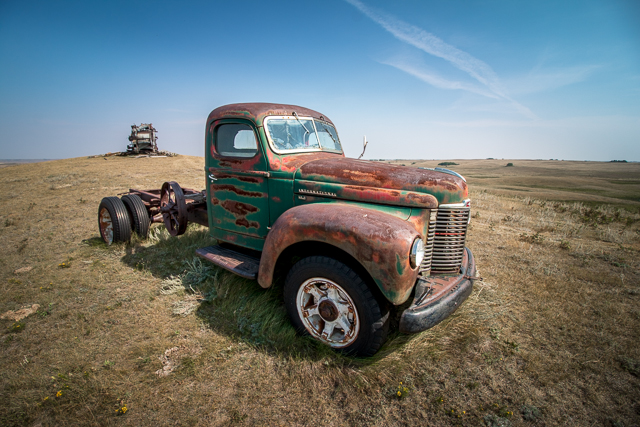
3) This International KB.
45) This late 1960s Chrysler Newport looks ready to hit the road. Old Jack’s property is extensive and this one can be found down the hill and oddly sort of off on its own. Like that Olds seen earlier, it’s a biggie.
46) This is an early Pontiac. This marque was only introduced in 1926 – we believe this one to be a couple years newer than that however. It was last plated in 1951. These had rather interesting badging (gone here) in the form of two slightly overlapping coins, one proclaiming it to be a “Product of General Motors” the other, with an effigy of Pontiac, an “Ottawa” First Nation’s Leader (circa 1700s) who became the symbol for the car maker; with the wording “Pontiac, Chief of the Sixes” (meaning six cylinder engines). Run on sentence alert! Now breath…
47) Down in the lower parts of the property, more metal. Jack has us follow him down where we explorer further. He keeps busy telling us stories of old to which we all stop and listen. Fascinating stuff. And later your author accompanies him to the place where he came into the world, the old family homestead, a few clicks across some field. The house and barn are gone, but the location is burned into his mind. He knows exactly where it was. And he speaks of being a young boy and the trouble he’d get into and the fun and games and the hard life on the farm. It’s in some ways it’s easier today, but is still no picnic living off the land.
Time has made Jack hard and grizzled, but only in appearance.
Car in foreground is a 1949 Chevrolet, about as common and “everyday” as a car can get.
Stay tuned for instalment two, coming soon enough, things seen down the hill (here: Old Jack’s Collection (2)). There’s lots more to see, more vintage cars, more vintage trucks, stuff going back eighty to ninety years, all of it interesting and photogenic. The wait will be worth it. Till then…
More like this…
Kelts’ Collection.
Mike’s “Fordtown” Collection.
Stettler County Collection – Part 1.
Lakefront Collection.
If you wish more information on what you’ve seen here, by all means contact us!
Date: August, 2018.
Location: Western Saskatchewan.
Article references and thanks: Old Jack, Photographer Rob Pohl, Filmmaker Rueben Tschetter, Photographer Byron Robb.
BIGDoer.com was on site with permission.
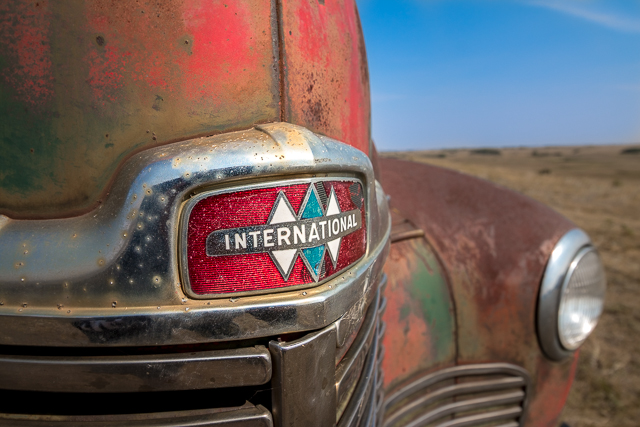
4) The company still exists.
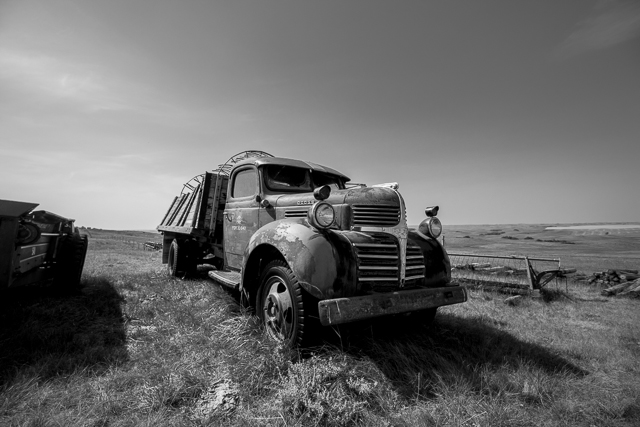
5) A product of the post-War boom.
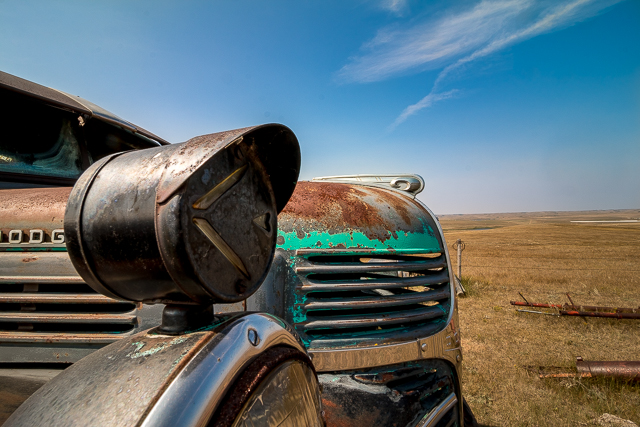
6) Turn signals were an option (honestly).
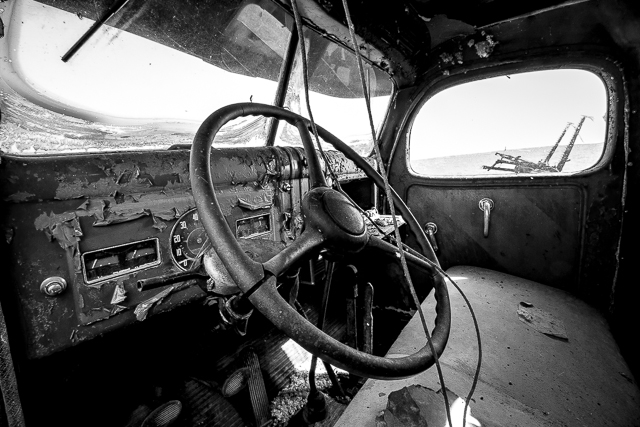
7) An utilitarian interior.

8) Former “RCAF”.
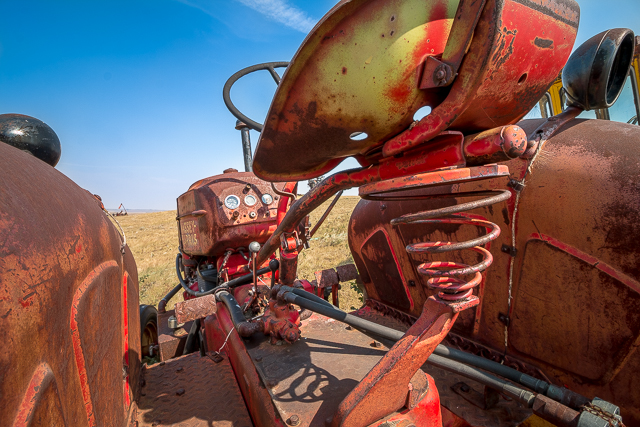
9) For sure a sore bum.
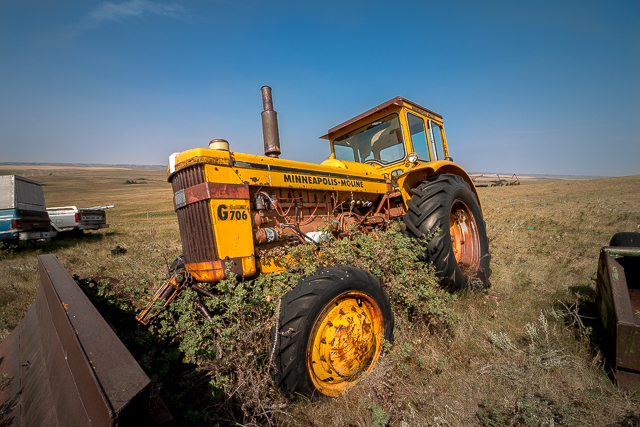
10) From the 1960s.
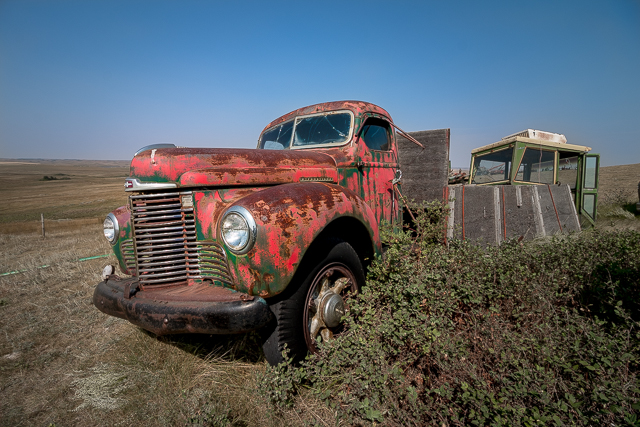
11) KB!
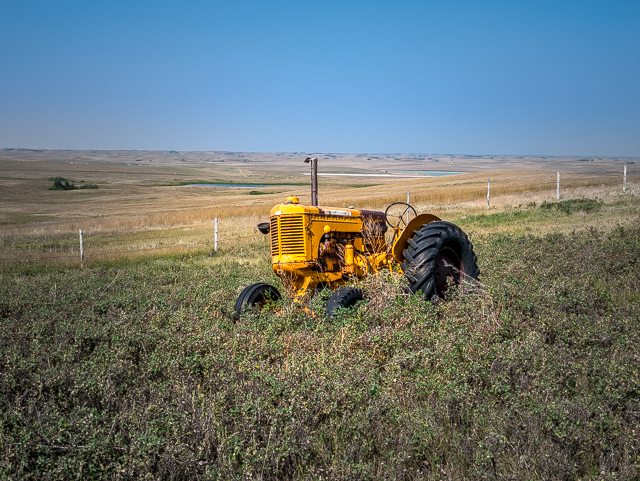
12) This yellow was Minneapolis-Moline’s colour.
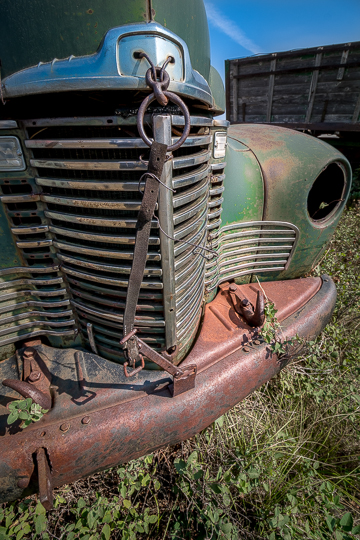
14) God bless the frugal farmer.
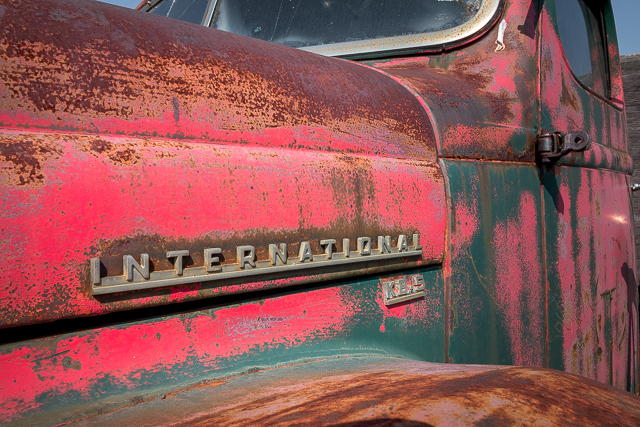
15) This one’s a KB-5.
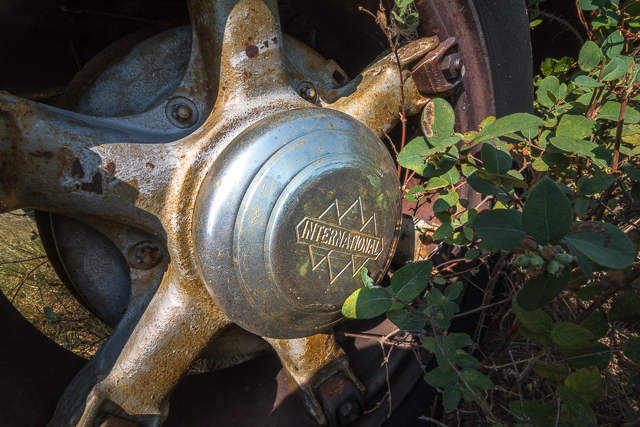
16) With Daytons.
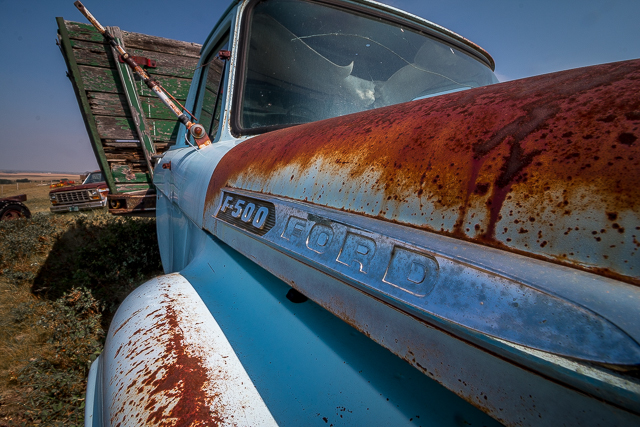
17) Old baby blue.
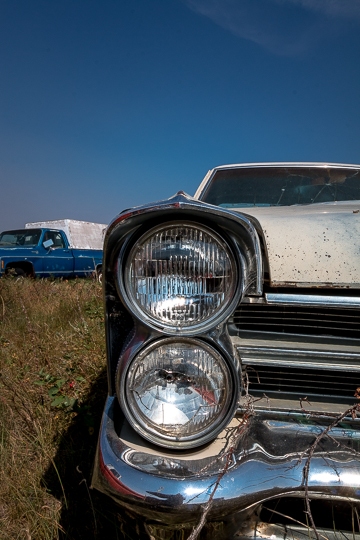
18) Stacked headlights were a Pontiac thing.
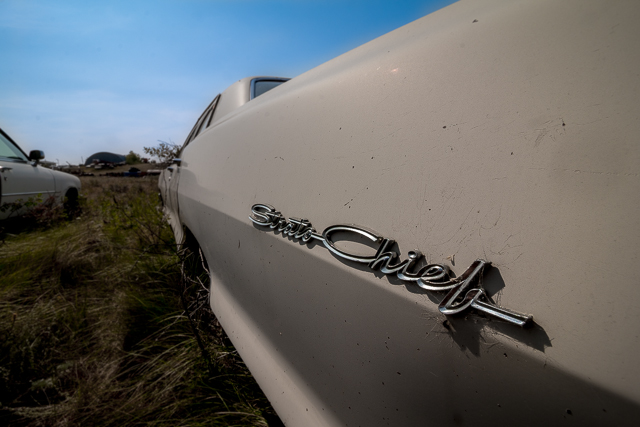
19) Not sold outside Canada.
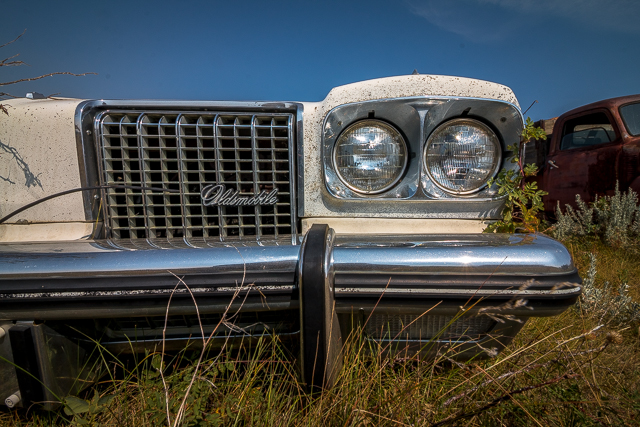
20) It seats about twenty!
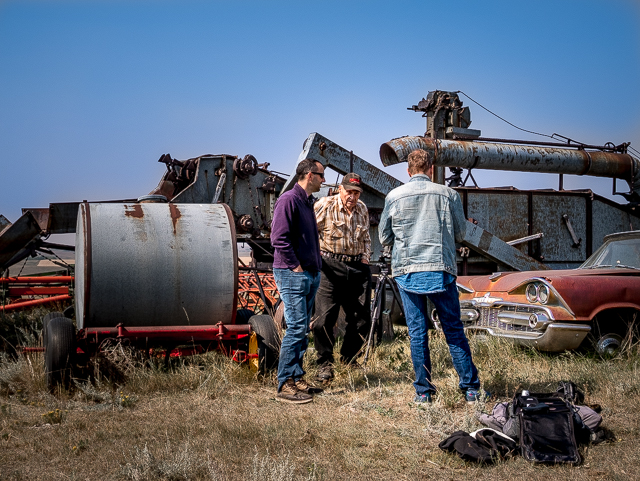
21) Chatting with Old Jack.
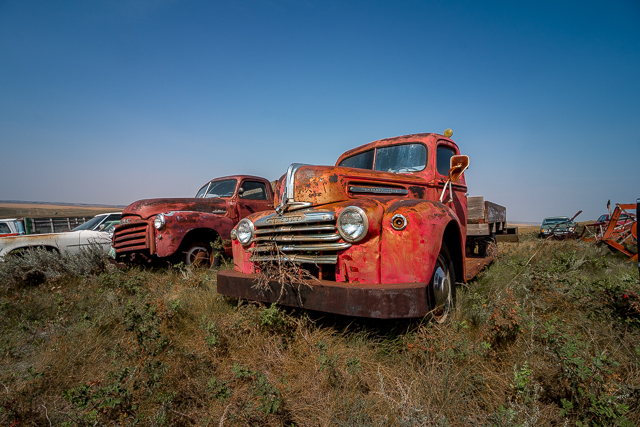
22) This one’s a 1946 or 1947 model.
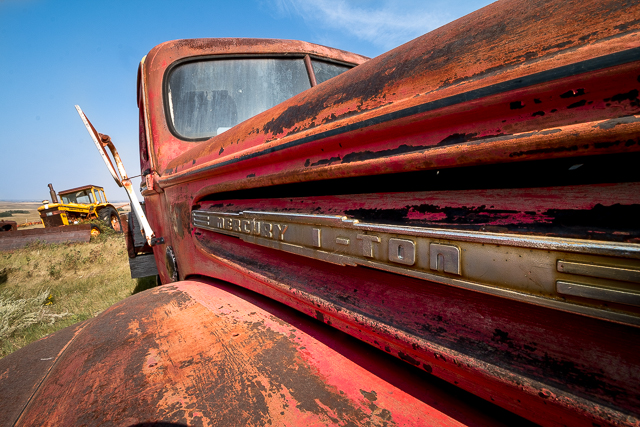
23) One ton of fun.
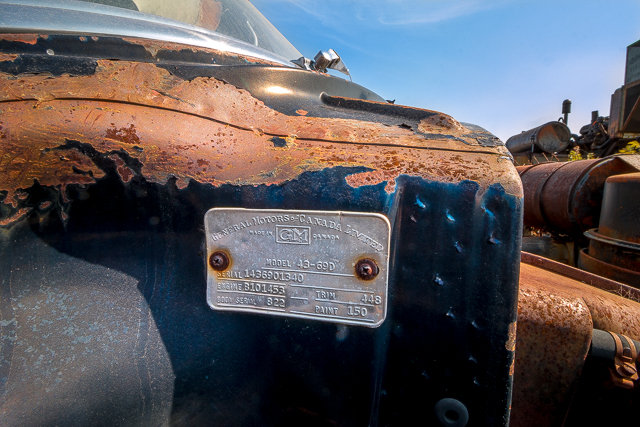
24) Made in a factory soon to close.
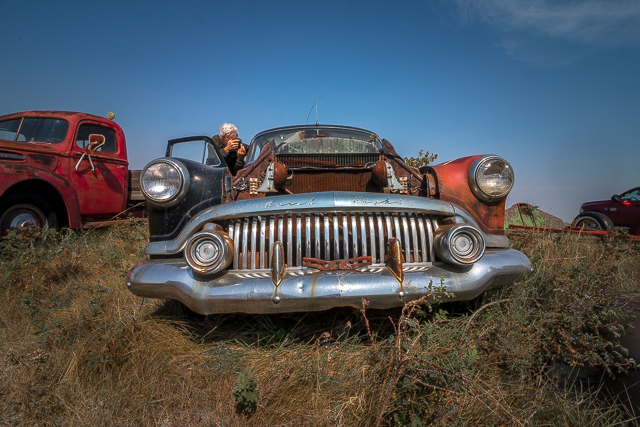
25) That grill!
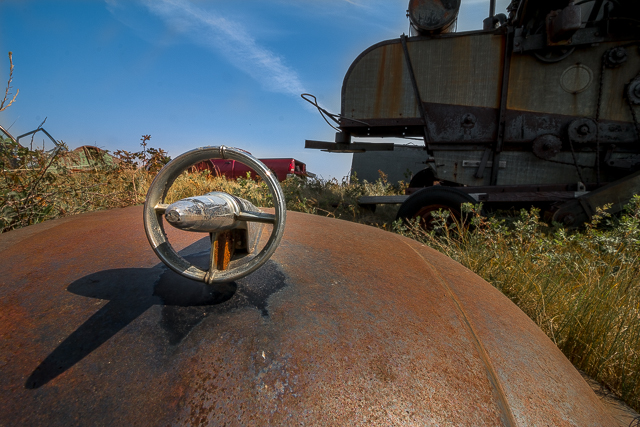
26) And over here, the hood.
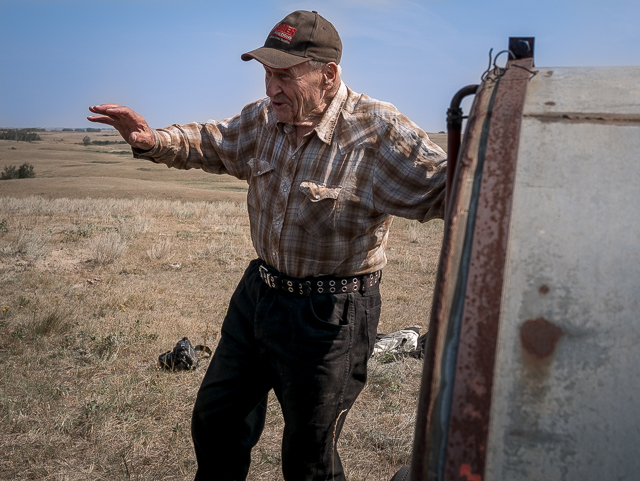
27) Our most gracious host, Old Jack.
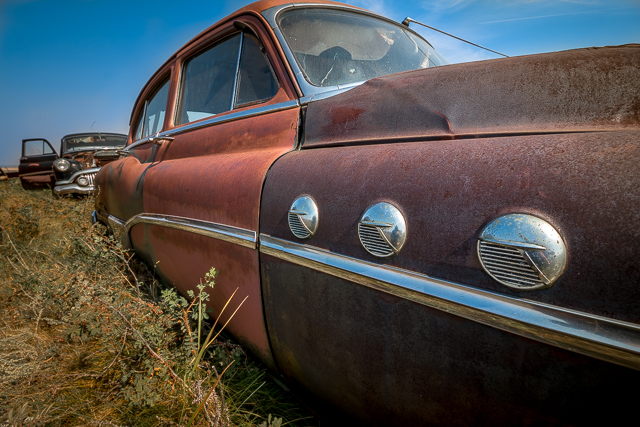
28) Portholes were a Buick feature.
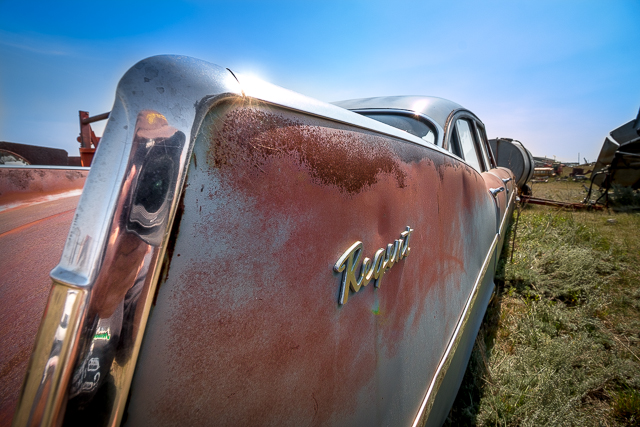
29) Crazy about tail fins.
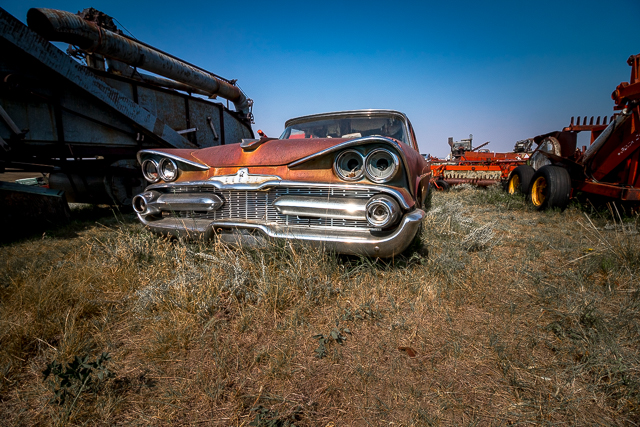
30) Canada only – this one’s a ’59.
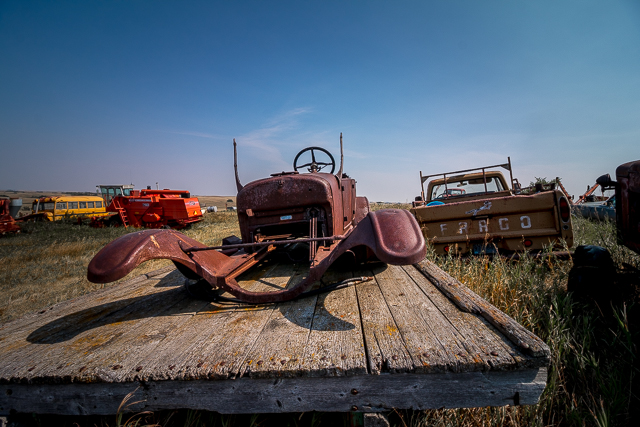
32) Fargo and an old T.
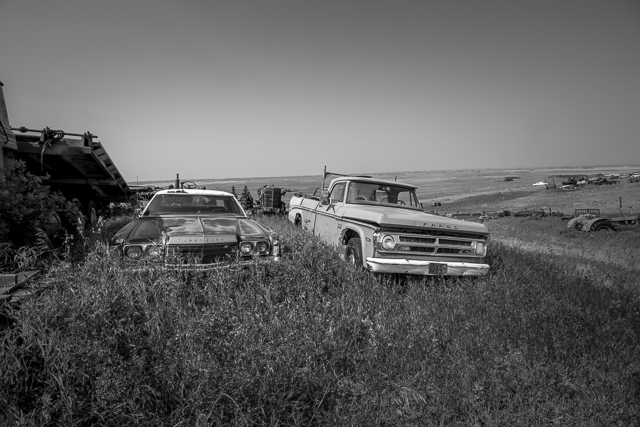
33) Products of the Chrysler Corporation.
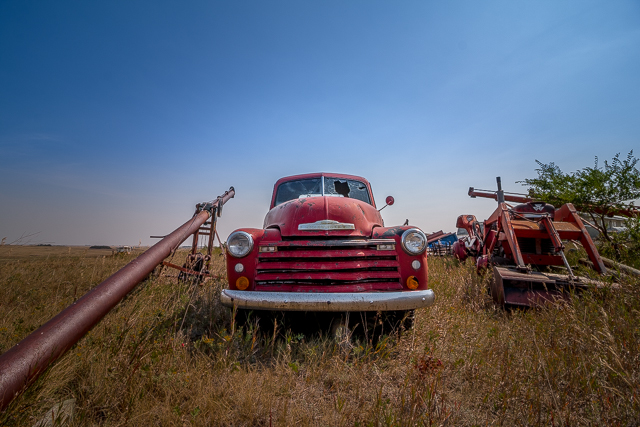
34) With a clunky name.
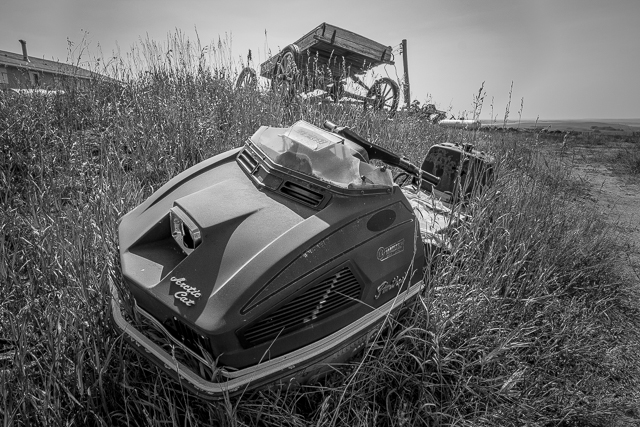
35) From the 1970s snowmobile craze.
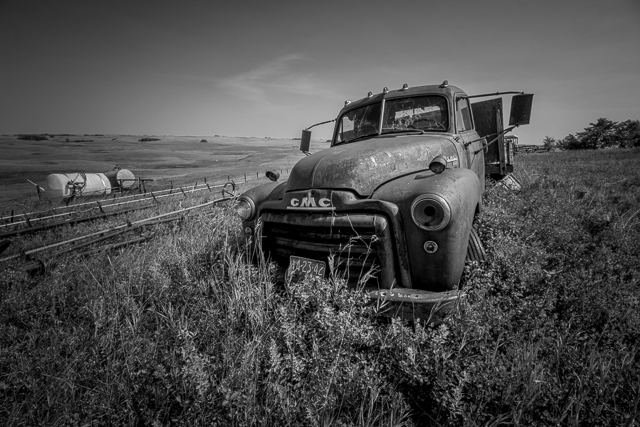
36) GMC’s version.
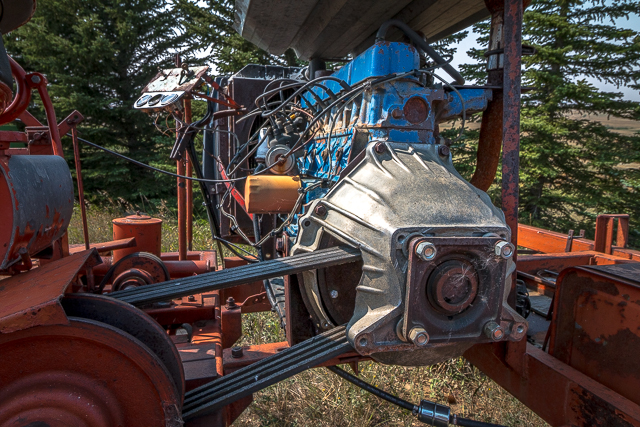
37) Just found it interesting.
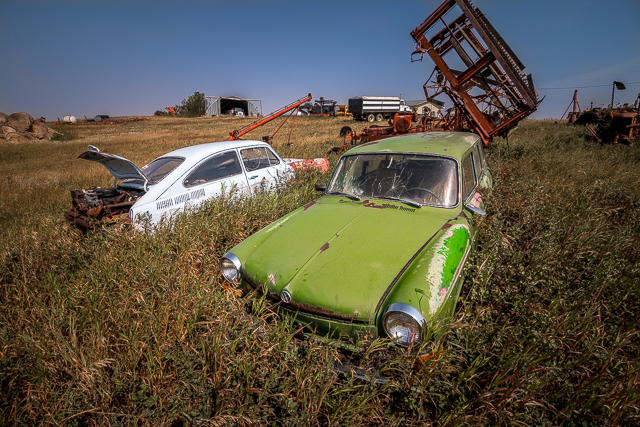
38) Two styles of a Volkswagen Type 3.
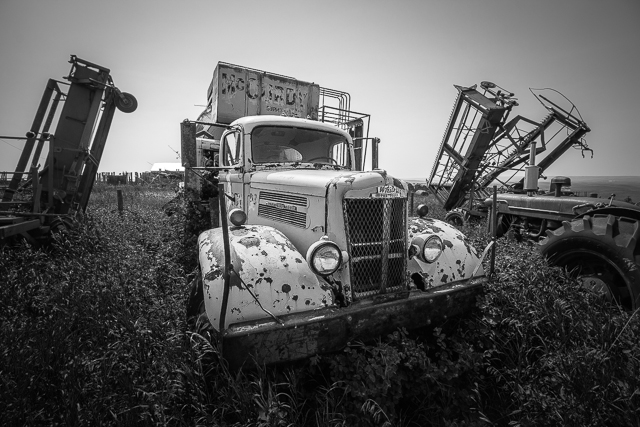
39) From Winnipeg Manitoba.
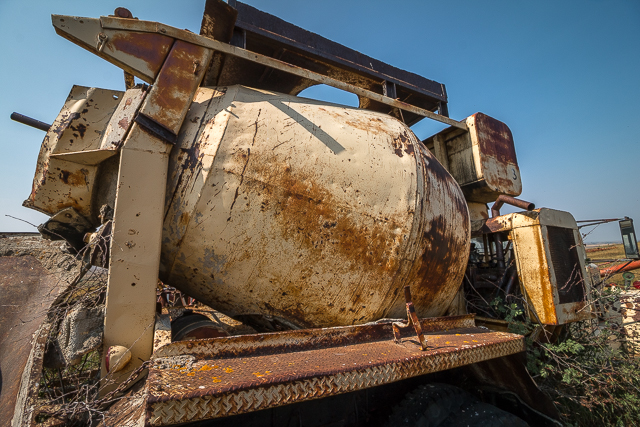
40) Round and round it went.
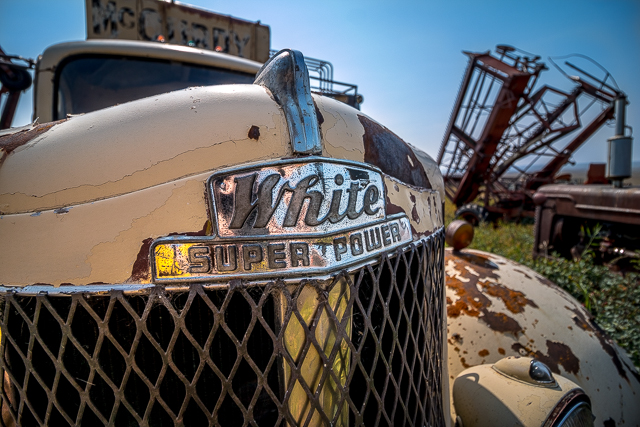
41) Something super from maker White.
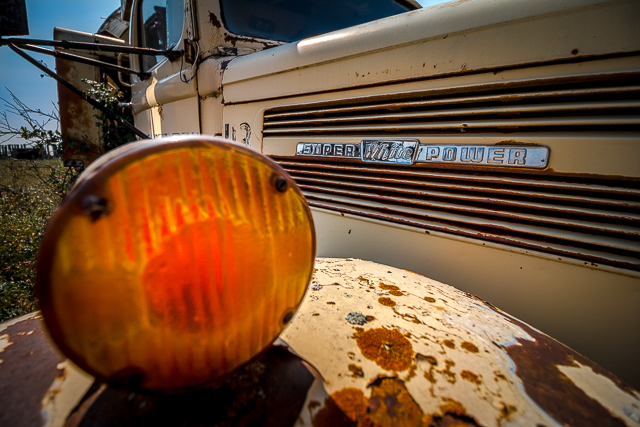
42) White was not a terribly common make here.
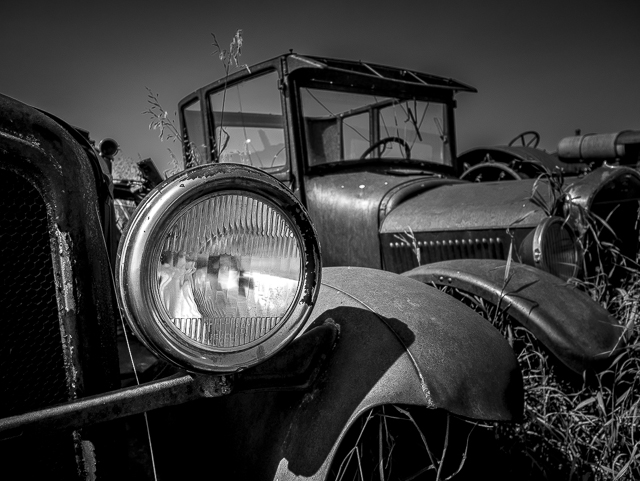
43) In back, one of the most iconic cars ever.
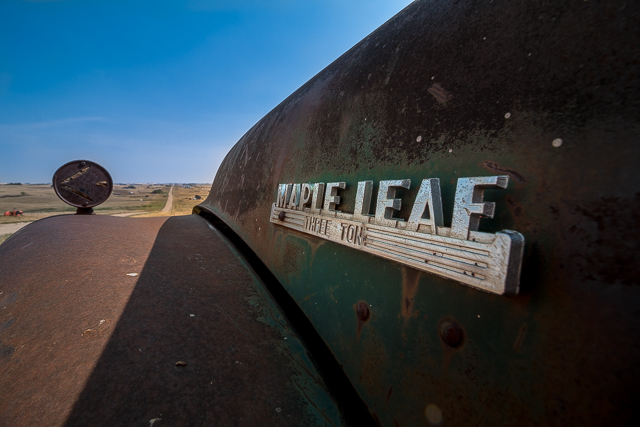
44) A Maple Leaf from General Motors.
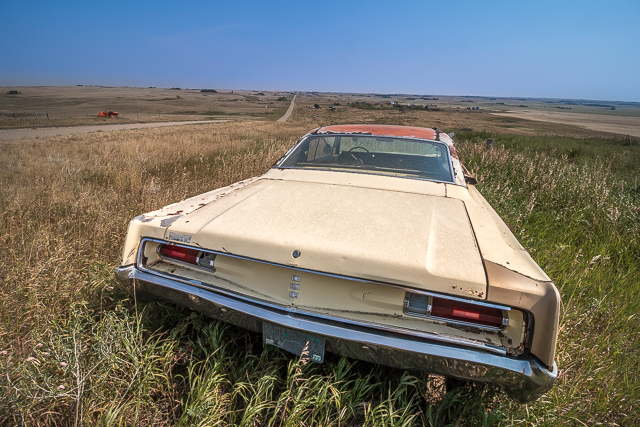
45) Off on its own, this late-’60s Newport.
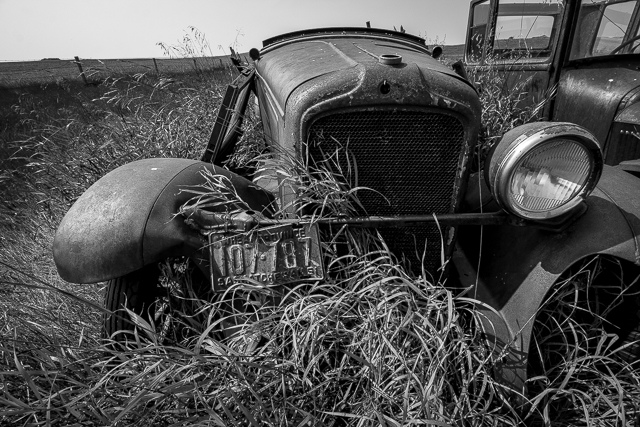
46) An early Pontiac.
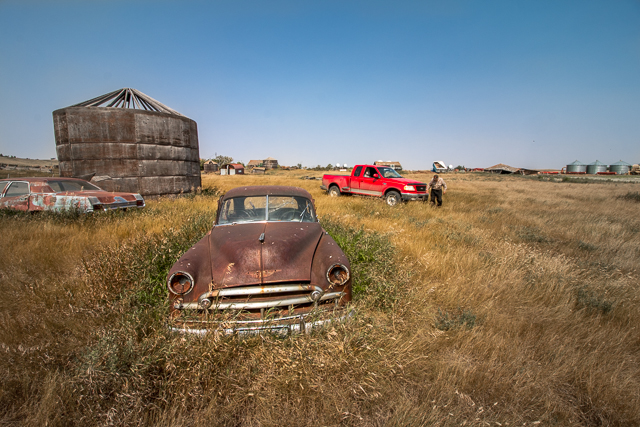
47) An “everyday” car, Old Jack, & the end of this instalment.

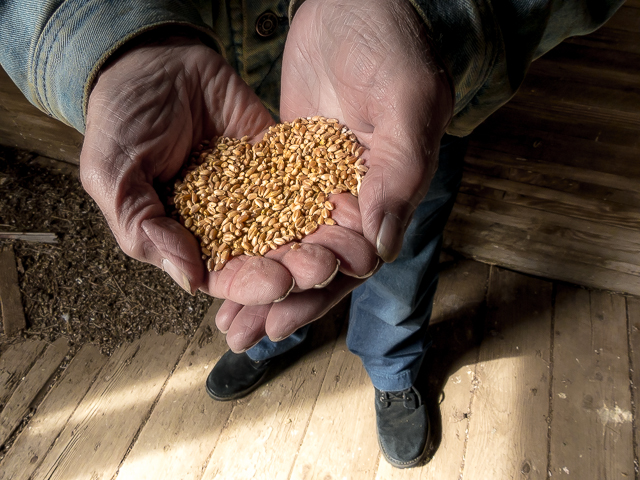
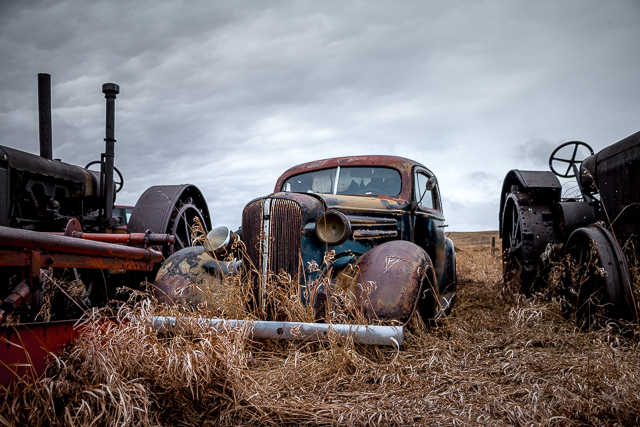
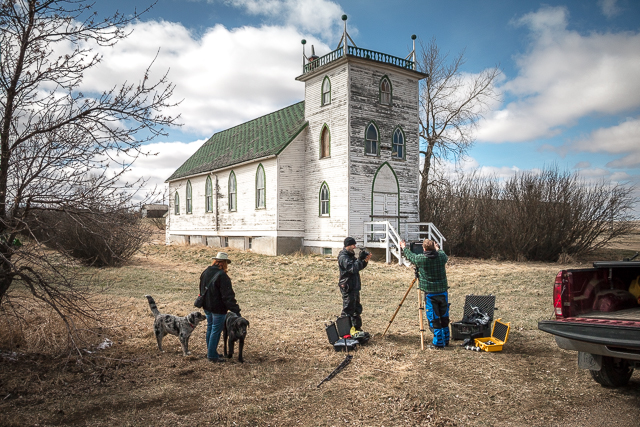
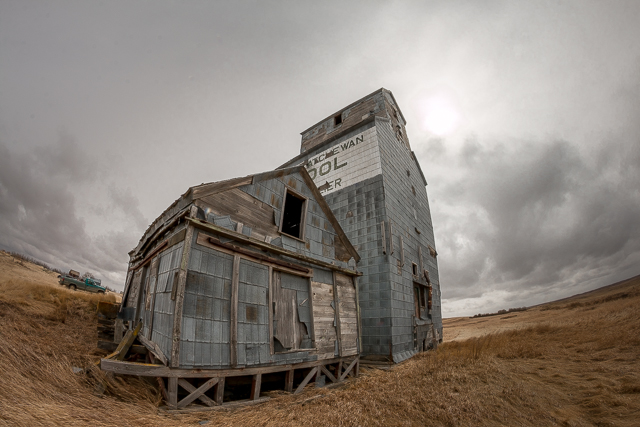
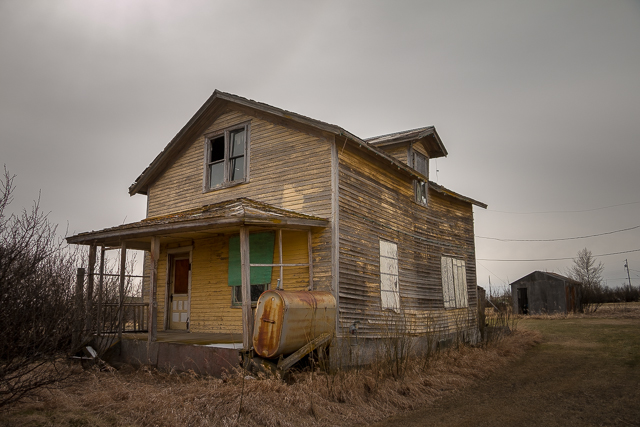
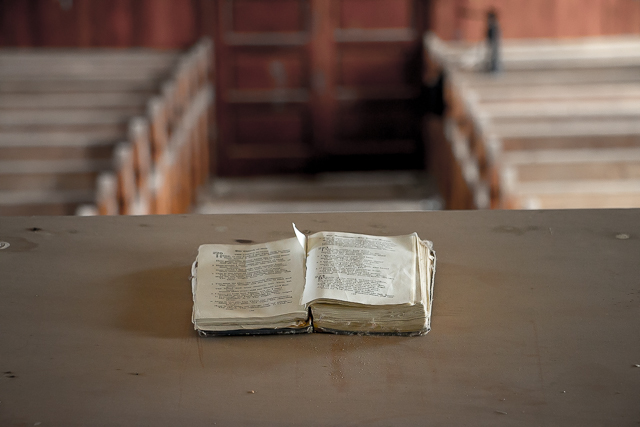
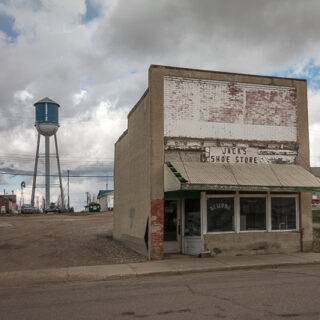
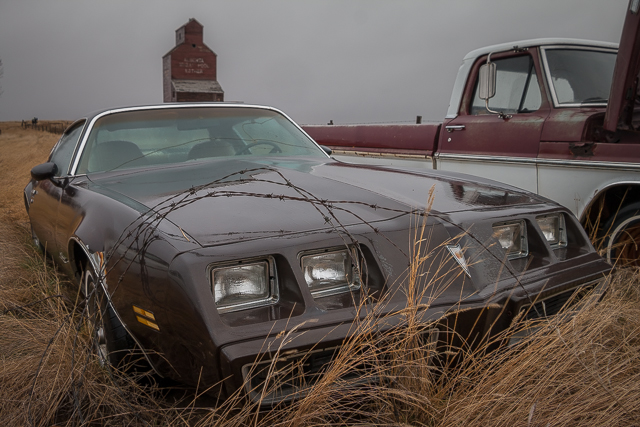
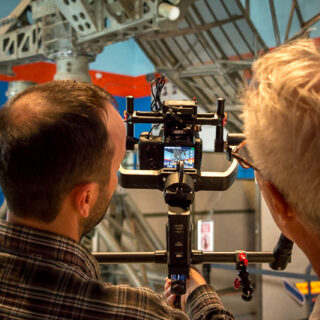
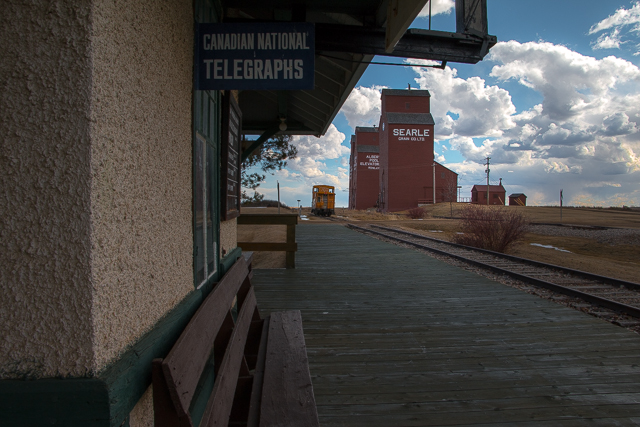
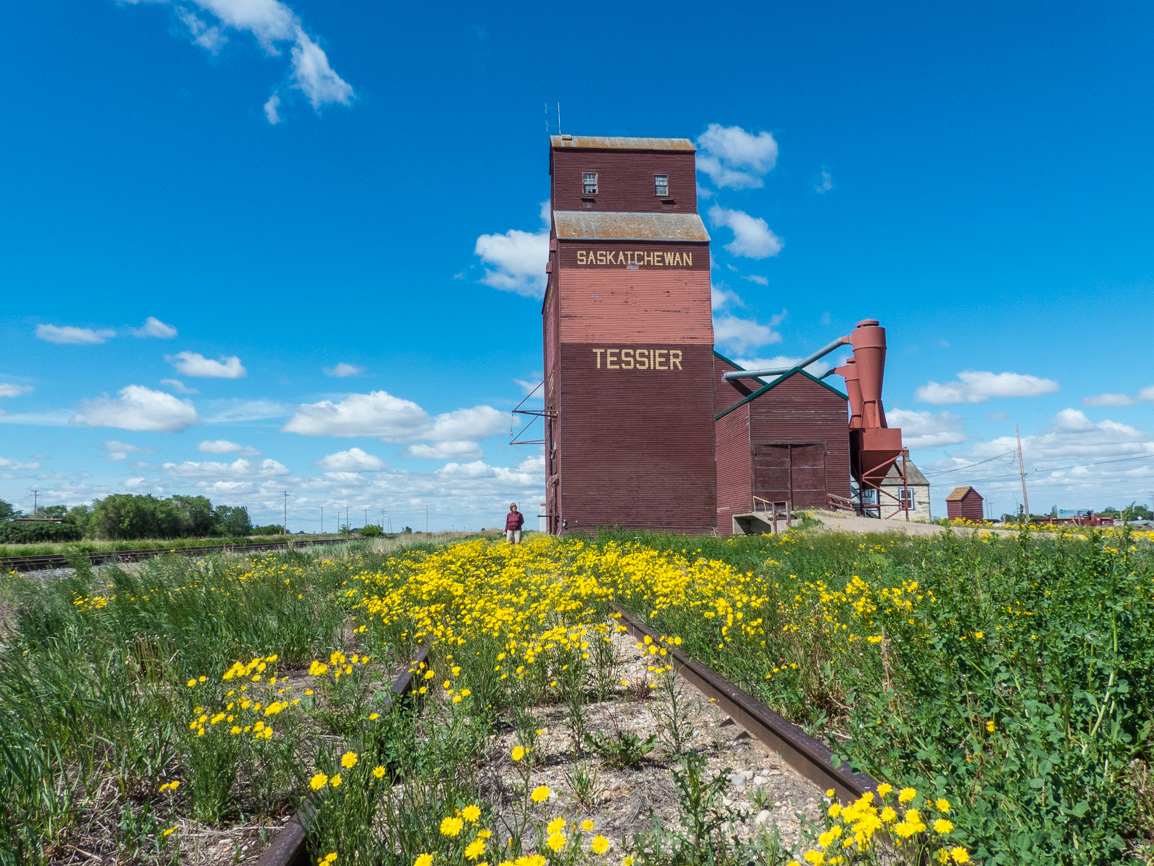
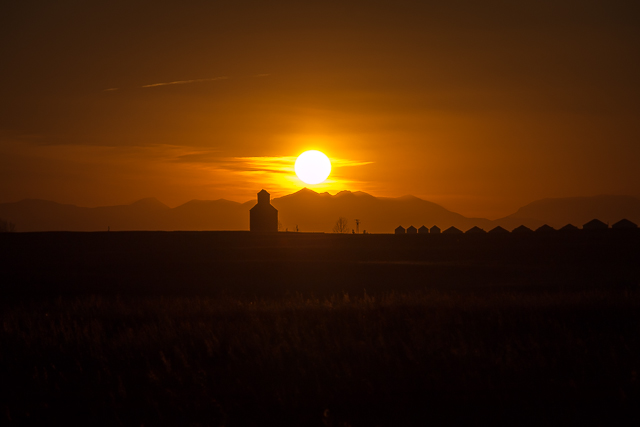







Beautiful…
Thank you.
Great times!
It doesn’t get ANY better than this.
Brings back many memories. Thank you.
Awesome, and you are welcome!
Thats where my dodge came from!
Oh? Interesting!
Thanks for sharing.
Any time!
Cool picture it’s good to see a moment from the past.👍
Glad you liked the article.
Wonderful photo essay and story. Thanks for sharing.
Thanks and it was our pleasure!
What a blast from the past. I can relate to a lot of the relics around here as I am also turning into a relic. Ever wonder why International trucks were called ‘cornbinders’? I have, and don’t know why. I owned a 1951 Pontiac Silver Streak when I was 17 and a 3 porthole Buick a few years later. Drove a tractor with the steel seat and fed a threshing machine once. Later in life, I fixed and programmed computers.
Glad this post meant something. We’re soon to be relics too! International Harvester was a large manufacturer of binders, machinery that bundled grain, including corn, into sheaves. As such, trucks were often given the nickname Corn Binder, or often just Binder, as a result. Thanks for commenting!
What a fantastic time spent with Jack.
He’s a charming fellow. Chatting with him over coffee is about the best thing ever.
Carassic Park.
Oh, that’s good! Going to have to steal that… Haha!
Highly enjoy your posts and back stories from a fellow photographer.
We’re so pleased to hear that!
When a bumper was a bumper.
Those old cars sure have a lot of metal.
Love it!
Awesome!
Excellent article, wonderful photos and a great day all around.
Thank you, that means a lot!
Love the old iron.
Us too! Of all the things we document, it’s a favourite.
Always like seeing your adventures. Thanks for taking us along.
You are welcome! And come back often!
Love, Love, Love! That would be so fun to explore! Great photos!
It was blast hanging with Jack. I could see he really enjoyed the company. Glad you like the pics. We could go back there a dozen times and still find it interesting to shoot.